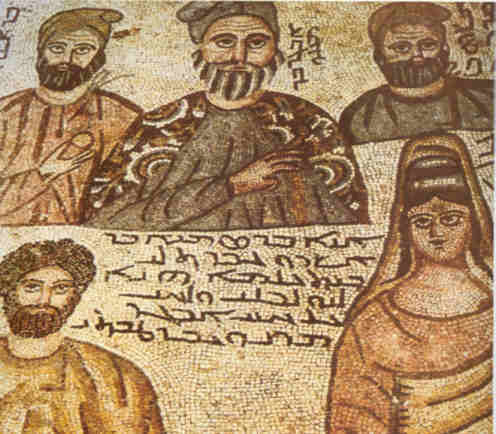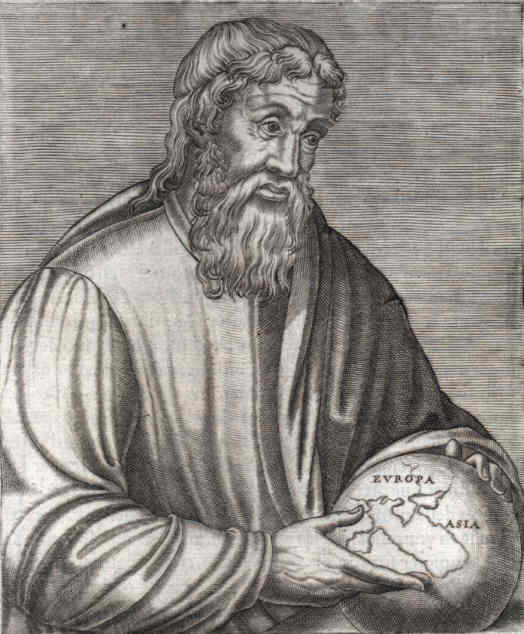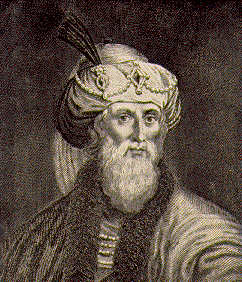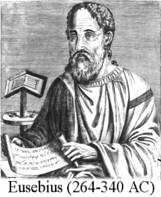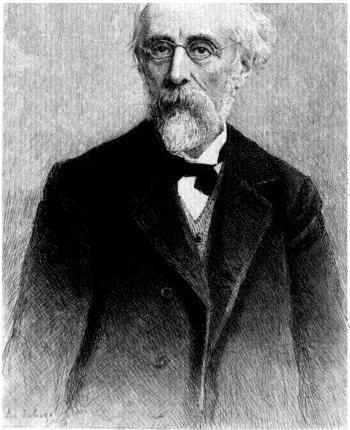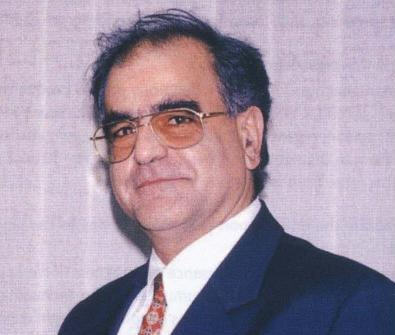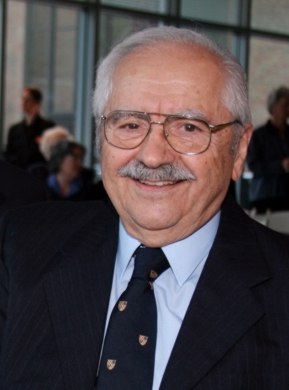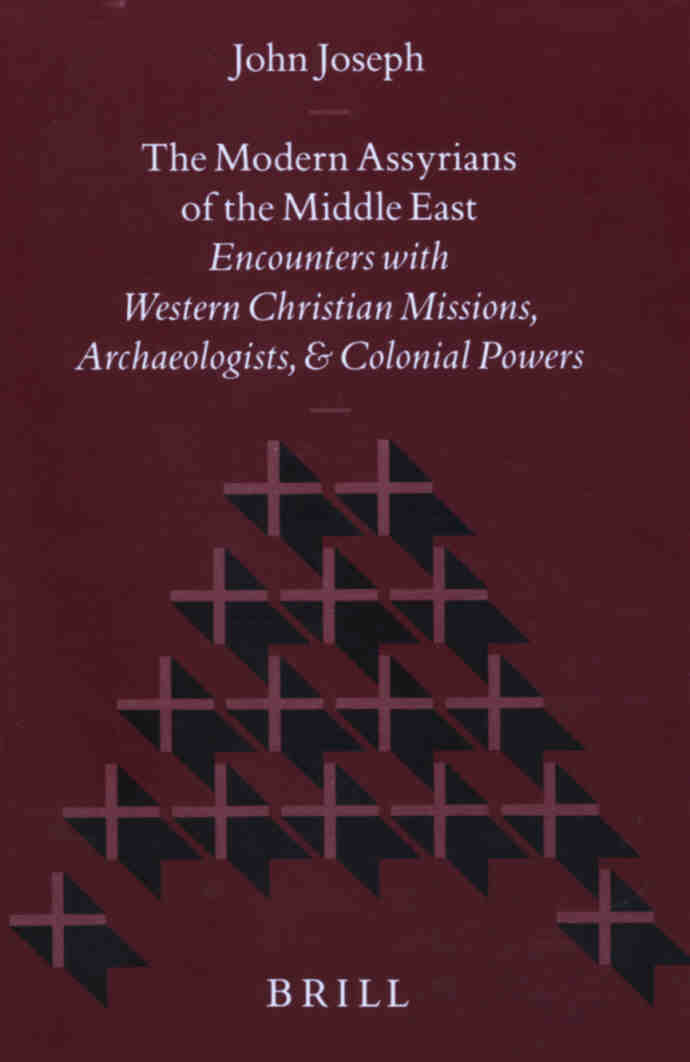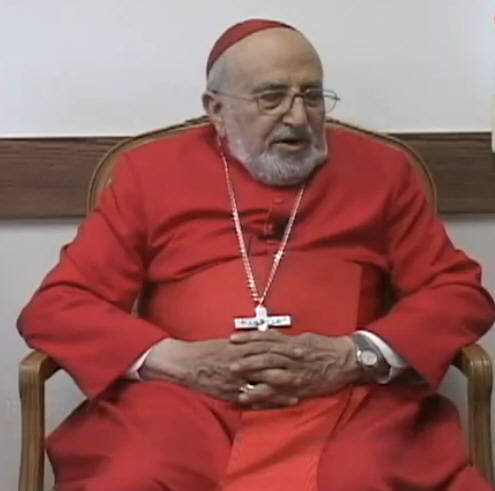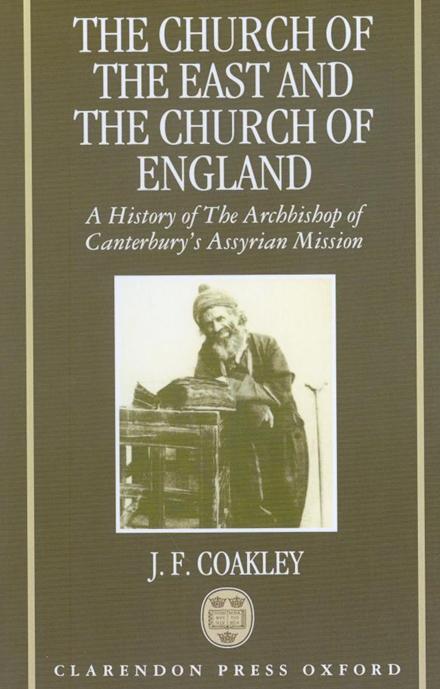|
Jacob of Urhoy (Urfa, in Turkey)
Who made the East- Aramean Nestorians known as "Assyrians"?
SUA/WCA and allowing terrorism
Aramean history, history, culture and language, a six partite interview
26-6-2007: Aram Nahrin: the Aramaeans, the Bible, Christianity, and the West
27-6-2007: Aramaic: the Millennia Long Trajectory of the Global Language
28-6-2007: Gabriel Sengo opens the Gates of Aramaean Thought, Culture and Wisdom
2-7-2007: Do not Call the Illustrious Nation of Aramaeans by the Misnomer 'Assyrians'!
2-7-2007: Extermination of the Aramaean Nation: Results of an Anglo – French Plan
(Photo: wikipedia.org) The Historian Poseidonios from Apamea (ca. 135 BC - 51 BC), was a Greek Stoic philosopher, politician, astronomer, geographer, historian, and teacher. He says: " "The people we Greek call Syrians, they call themselves Arameans" From: See J.G. Kidd, Posidonius (Cambridge Classical Texts and Commentaries, 1988), vol. 2, pt. 2, pp. 955-956)
(Photo: wikipedia.org) Strabo (born 63 BC or 64 BC, died ca. 24 AD), a Greek historian, geographer and philosopher is mostly famous for his Geographika ("Geography") He says: "Poseidonius conjectures that the names of these nations also are akin; for, says he, the people whom we call Syrians are by the Syrians themselves called Arameans." (From: The Geography of Strabo, translated by Horace Leonard Jones and published in Vol. I of the Loeb Classical Library edition, 1917, Book I, Chapt. 2, 34)
(Photo: http://www.ccel.org) Flavius Josephus (c. 37 – c. 100 AD (or CE)) was a 1st century Jewish historian and apologist of priestly and royal ancestry who survived and recorded the Destruction of Jerusalem in 70 and later settled in Rome. He says: ""Aram had the Arameans, which the Greeks called Syrians."" (From: Antiquities of the Jews, translated by William Whiston in 1737, Book I, Chapt. 6)
Eusebius of Caesarea (c. 275 – May 30, 339), was a bishop of Caesarea in Palestine and is often referred to as the father of church history because of his work in recording the history of the early Christian church. He says: ""and from Aram the Arameans, which are also called Syrians" (From: Sebastian Brock, "Eusebius and Syriac Christianity," in Harold W. Attridge and Gohei Hata, eds., Eusebius, Christianity, and Judaism (Leiden 1992), p. 226)
Abu Al-husayn 'ali Ibn Al-husayn Al-mas'udi, born 895 in Baghdad [Iraq] and died 957 in al- Fustat [Egypt], was a historian and traveler, known as "the Herodotus of the Arabs.” He was the first Arab to combine history and scientific geography in a large-scale work. On Tur Abdin he says: "Tur Abdin is the mountain where remnants of the Aramean Syrians still survive." (From: Michael Jan de Goeje: Bibliotheca Geographorum Arabicorum III, Leiden 1906, 54, I)
Prof. Dietrich Hermann Hegewisch born Dec. 15, 1746 in Quakenbrück [Germany] and died April 4, 1812 in Kiel, was a prolific german historian at the University of Kiel with a wide span of interests. He says: "Do not the Syrians, as they are usually called, or the Arameans, as they in fact are termed, deserve more attention in world history than they are usually given?" (From: D.H. Hegewisch: Die Aramäer oder Syrer; ein kleiner Beitrag zur allgemeinen Weltgeschichte, Berlinische Monatschrift, 2, 1794, p. 193)
On Page 197 he says: "The names Syria, Assyria, Mesopotamia, Babylon, etc. stem from the Greeks, who were not familiar with the true geography of these lands when the names first started to be used. Later, partly because of continuing ignorance and partly because of convenience despite having accurate knowledge, they persisted in using them since it would have required something of an effort to give up the old, familiar names and divisions of the countries and switch to the new ones, even if they were more accurate. The old, true, and single name of these lands is Aram; it is mentioned numerous times in the Bible of the Old Testament, and Greek scholars were also familiar with it and probably described the population of these areas as Arameans, though seldom, as they usually continued to use the term Syrian, which had been familiar to the Greeks."
On page 307 he says: "The Syrians or Arameans were not merely a numerous and large people, they were also a much cultivated people."
(Photo: http://portrait.kaar.at) Prof. Theodor Mommsen born Nov. 30, 1817, Garding, Schleswig [now in Germany] died Nov. 1, 1903, Charlottenburg, near Berlin, was a German historian and writer, famous for his masterpiece about the History of Rome. He received the Nobel Prize in Literature in 1902. He says: "the history of the Aramaean or Syrian nation which occupied the east coast and extended into the interior of Asia as far as the Euphrates and Tigris" (From: The History of Rome, written between 1854 and 1856, Leipzig, by Theodor Mommsen, Book First, Chapter One) "the Arameans defended their nationality with the weapons of intellect as well as with their blood against all the allurements of Greek civilization and all the coercive measures of eastern and western despots, and that with an obstinacy which no Indo- Germanic people has ever equalled, and which to us who are Occidentals seems to be sometimes more, sometimes less, than human." (ibid, Book Third, Chapter One)
(Photo: wikipedia.org) Prof. Theodor Nöldeke born March 2, 1836 in Harburg near Hamburg, died December 25, 1930 in Karlsruhe, was the leading german semitic scholar, who studied at Göttingen, Vienna, Leiden and Berlin. He says: "The main body of the population of all these wide landscapes from the Mediterranean Sea to beyond the Tigris belonged to a certain nationality, that of the Arameans." (From: Th. Nöldeke: Assyrios Syrios Syros, in Zeitschrift für klassische Philologie, Hermes 5, Berlin 1871, p. 460)
On page 461 he says: "It is well understandable that people have started to transfer the name of the country to the most important nationality and so the name 'syrian' was apprehended ethnological and was equated with 'aramaic'."
On page 468 he says: "Since the times of Alexander [the Great], if not already somewhat earlier, people have started to transfer the name of the Syrians exclusively over the prevailing in Syria nationality, and in this way this originally political-geographical term became an ethnological one that was identified with the local Arameans."
"From the time the Greeks came to have a more intimate acquaintance with Asia, they designated by the name of Syrians, the people who called themselves ´Arameans’.” (From: Th. Nöldeke, Kurzgefasste Syrische Grammatik (Leipzig, 1880), p. XXIX)
"Regarding the name of this nation and its language is the original 'Aramean’ in essence also the only one [sic], that for the employment of the present-day scholarship as yet strongly fits.” (From: Th. Nöldeke, "Die Namen der aramäischen Nation und Sprache,” in Zeitschrift der Deutschen Morgenländischen Gesellschaft 25 (1871), p. 131)
(Photo: www.doaks.org) Karl Eduard Sachau born 20 July 1845 and died 1930 was a German orientalist. He was 1872 professor at the University of Vienna, and in 1876, professor at the University of Berlin, where he was appointed director of the new Seminar of Oriental languages in 1887. He is especially noteworthy for his work on Syriac and other Aramaic dialects. He says: "The nation of the Arameans: This national name later, mainly in consequence of Jewish-Christian literature influences, gave way to the Greek designation Syrians." (From: Verzeichnis der Syrischen Handschriften der königlichen Bibliothek zu Berlin von Eduard Sachau 1. Abteilung, Berlin 1899, Vorrede I)
|
Aramean people: Aramean people (not to be confused with ‘Armenians’) speak Aramaic, the language spoken by Abraham, Moses and Jesus. They are the indigenous people of what was called in ancient times Aram- Nahrin, in our days it is called ‘Mesopotamia’. Some Arameans today identify themselves with “Assyrians”, because of the spiritual colonial hate generating activities of the Western missionaries and diplomats in the Middle-East in 16th and 19th centuries. Other Arameans became known as “Chaldeans”. However all of them are Arameans.In Turkey, the Arameans are called: Süryani. In Arabic they are called Al- Suryan. Extermination of the Aramaean Nation: Results of an Anglo – French Plan 2-7-2007- Part 5 In this 5th part of his interview, Mr. Gabriel Sengo, Chairman of the Aram Nahrin, draws a complete picture of the Aramaean Nation and the Aramaean Christian denominations throughout the Middle East and in the Diaspora.
By Prof. Dr. Muhammad Shamsaddin Megalommatis, Orientalist Source: http://www.buzzle.com/articles/extermination-aramaean-nation-results-anglo-french-plan.html http://www.americanchronicle.com/articles/viewArticle.asp?articleID=31170 Through the figures, the details, and the insightful Mr. Sengo makes available, we come to realize the extent of the criminal work carried out by the perverse European colonials and pseudo-Christian missionaries, mainly France and England, in the name of the False Western Christianity. A Satanic work of racial extermination has been systematically pursued by France and England against the entire Aramaean Nation over the past 450 years, and it is time that the world examines the racist and inhuman deeds of the Colonial European criminals in order to finally evaluate the really hidden pages of the Middle Eastern History – all that is kept hidden behind the besotting rhetoric of Anti-Ottoman, Anti-Islamist, and Anti-terrorist concerns. If bogus-Christian Europe perpetrated a multifaceted Genocide against the Aramaean Nation, it is time for the rest of the world to wonder what comes next as part of the Frankish establishment’s plots against the Mankind. Standing accused, the political, academic, spiritual, and diplomatic establishments of France and England must explain why they attempted with such persistence and such obstination to obliterate the Nation that still today speaks Aramaic, the Native Language of the historical and true Jesus? Is it because the under-preparation, Frankish, Merovingian bogus-Jesus, this abominable creature of the Apostate Freemasonic Lodge, will be unable to speak Aramaic? Interview with Mr. Gabriel Sengo, Chairman of the Aram Nahrin Organization – Part V - What political parties, fronts, and cultural associations have Aramaeans formed over the past decades? - There are several Aramean organisations. As far as West – Arameans are concerned, we can enumerate the following: - Aramaic Democratic Organisation (ArDO, http://www.aramaic-dem.org/) - Syriac Universal Alliance (http://www.sua-online.org/) - Arameans of Aram-Naharaim Foundation (http://www.aramnahrin.org/) In addition to the aforementioned, the Maronites have their own organisations, being well organised in Lebanon and abroad, for example: The World Maronite Union (http://www.maroniteunion.org/), The Maronite American Research Institute etc. In Lebanon of course they heavily influence the political power. With respect to the East – Arameans we count the following: - Foundation Assyrian Universal Alliance (http://www.aua.net/), mainly representing the East - Aramean “Nestorians” - Assyrian Democratic Organisation (Iraq, Baghdad) - Chaldean Democratic Union (Northern Iraq) - Chaldean National Congress (wereldwide) In addition, we should mention the following: Assyrian Patriotic Party, Assyrian National Congress, Bethnarin Democratic Party. The Aramaeans in Turkey - How is the situation for Arameans in Turkey? - In Turkey there are around 20.000 Arameans, who are mainly West - Aramean Syrian Orthodox. The majority of them live in Istanbul, while 2.000 of them still live in Tur Abdin. Yet, thirty years ago, there were around 40.000 Arameans living in Tur Abdin. They “thread on egg shells” and are excluded from social, cultural and political development. The Arameans are not recognized as distinct ethnic minority. The Aramaic language is officially forbidden; however, in the last years we have observed some flexibility due to the desire of Turkey to join the European Union. In brief, their situation is still difficult; however, there is some slight light appearing at the horizon. The Aramaeans in Syria - How is the situation for Arameans in Syria? - The total Christian population in Syria is estimated to be around 1.7 million people. Of these Christians around 1.5 million are estimated to be Arameans. They include West - Aramean Syrian Orthodox, West - Aramean Syrian Catholic, West - Aramean Melkite Orthodox, West - Aramean Maronites, West Aramean - Melkite Catholics, East - Aramean “Nestorians” (“Assyrians”) and East- Aramean Chaldeans. The West - Aramean Melkite Orthodox members are the biggest group with 600.000. However, since the 17th century they exchanged Aramaic for Arabic in their liturgy. The Arameans are only recognized as religious minorities and not as the indigenous nation of Syria. Although Aramaic is allowed to be taught, many Arameans are linguistically arabised, and this also includes some clergy. Aramaic is only allowed to be taught as a religious language and not as national, cultural language representing the Aramean Heritage and Culture. In 2000 a monastic seminary was opened in Saidnaya, near Damascus, where Aramaic is being taught. In addition, in Aleppo there is an annual course on Aramaic provided by the Archbishopric of Aleppo. The Aramaeans in Lebanon - How is the situation for Arameans in Lebanon? - The total amount of Arameans are estimated to be around 2.0 million people. The majority of those Arameans belong to the West - Aramean Maronites, who total approximately 1 million people (while no less than 3 to 4 million Lebanese origin West - Aramean Maronites live abroad). Other Aramean denominations include West - Aramean Syrian Orthodox, Syrian Catholics, Melkites (Orthodox and Catholics), East - Aramean ‘Nestorians’ and East - Aramean Chaldeans. Lebanon is the only country in the Middle-East where the Arameans could build a “paradise”. The president himself has usually been selected among the West - Aramean Maronites. The government, the police, the army and other institutions have been mainly occupied by Christians Arameans. The existing problem consists mainly in the unbridgeable hatred cultivated by the Western colonial practices, which makes it impossible for Arameans to unify under one single umbrella. However, in spite of this, Arameans and Aramaic are flourishing in Lebanon. In the last years, we have seen a tendency among the Maronites to acknowledge their Aramean roots and cultivate them. In recent years, some of them started teaching Aramaic language to their children. This unfortunately has not become the general rule for all the Arameans thus far. On the other hand, we also see that many Arameans have been arabised. In addition, many of them have in fact lost their Aramean identity or show no interest in it. It is quite sad to see that the Arameans do not work together to make their Heritage more markedly recognized in Lebanon. The Aramaeans in Iraq - How is the situation for Arameans in Iraq? - Before the “liberation” of Iraq, Arameans living in Iraq were estimated to be as the following figures indicate:
As all people all over the world know, the current situation in Iraq in terrible! You have details in the daily news. Raping, attacking, threatening, forced conversion to Islam, and ethnic cleansing reigning supreme! Under Saddam Hussein the Christians were a somewhat “protected” minority and the Islamic fanatics didn’t dare to point with their fingers to the Christians. Quite contrarily, after the Americans stepped in, Christians in Iraq have been exposed to a manifold worse situation; to give you some examples, on the 12th of October 2006 the West - Aramean Syrian Orthodox priest Paulus Iskandar was abducted and horridly slaughtered. On the 3rd of June 2007, the East - Aramean Chaldean priest Ragied Aziz Gannie was killed - along with three deacons. The “liberation” of Iraq in 2003 turned the country into a living hell! The coalition partners were not able to bring peace and stability; consequently, many innocent Iraqi people, including Arameans, have paid and keep paying a high price for it. As for the Arameans, their situation is more severe, for they have no means to defend themselves, being at the mercy of those who have turned Iraq into a bloodbath and whose language seems to be ‘blood, blood and again blood’. Thousands of Arameans have actually left Iraq for Jordan and Syria. Some sources reveal that about 100.000 Aramaeans have already left the country. In the new Iraqi constitution, the Arameans are excluded, while the Western colonial spiritual products of France (Chaldeans) and England (Assyrians) are included. The Aramaeans in Iran - How is the situation for Arameans in Iran? - In Iran, there are West - Aramean Melkites, East – Aramean ‘Nestorians’ and East – Aramean Chaldeans. The majority of them is made by the East - Aramean “Nestorians” and Chaldeans who are sometimes wrongfully called “Assyrians”. Their number are estimated between 10.000- 20.000, and they have in the Iranian Parliament their own representative like the other religious minorities. They are “free” within the Church walls. Only in reserved areas where Muslims are not allowed to go, the Christians have a right to enjoy alcoholic drinks. The Arameans in Iran are recognized as religious minorities under the Western colonial spiritual name “Assyrian”. Furthermore, there are Arameans in Jordan (West - Aramean Syrian Orthodox, West - Aramean Melkite Orthodox, and West - Aramean Melkite Catholic. They total around 70.000 people. In Israel, there are around 50.000 Arameans as well. In countries adjacent to the wider Middle Eastern region, Arameans are to be found in the following countries:
- How is the situation for Arameans in other Middle Eastern countries? - Although, the Arameans are an important part of the Middle-East and they were there before the advent of Islam, the situation for the Aramean Nation has always been very difficult in many countries of the Middle-East. Their culture and identity have constantly been under pressure; Arameans living in the Middle East are certainly not free in the sense of freedom of expression and social, cultural and political development. This is the reason many of them have forgotten their roots and have implemented strange identities which are not theirs. On the other hand, the Arameans themselves are to be blamed for this, because they have stuck to the hatred of the Western missionaries and are not able to get rid of this horrible spiritual burden, which has effectively destroyed them! The Aramaeans in the Diaspora - How is the situation for Arameans in the Diaspora? - In the Middle-East, the Arameans are relatively close to each other and concentrated, with focal point in the area of Mesopotamia. In the Diaspora, however, they are spread over many countries including Western Europe, Brazil, USA, Australia, New Zealand, etc. The danger of drawing apart is a point of concern. Another point is that many of them, in particular the youth, are being attracted by the materialistic temptations of the West. Because they have lost the proto-lands of their forefathers, which they inhabited for thousands of years, the danger is there that they lose ‘touch’ with their roots. The Aramean Diaspora, however, brings also considerable possibilities with: 1. The freedom to teach the Aramaic language is being fully exploited. Almost all-over the world of Diaspora Aramaic is taught in schools within churches or monasteries. Hundreds of churches have been built in Diaspora which bounds the nation together. 2. The academic level within the Aramean Nation is increasing very rapidly. Many among the second generation Arameans have a high education degree in various fields of arts and sciences, involving Physics, Medicine, Humanities, etc. 3. The Aramean businessmen have grown exponentially within the span of the last 10 to 20 years. 4. The freedom of expression, i.e. setting up associations, political and non-political organisations, has also been used extensively, therefore resulting in maintaining, developing and nourishing of Aramaean cultural traditions and customs. In brief, the Arameans in the Diaspora have used extensively the freedom to develop themselves, something which is certainly not obvious in the Middle-East. All the parts of the interview:
Copyright © Aram-Naharaim Organisation
|
Letters to governments and international institutions
Aramean Spiritual/ Physical Genocide
Fake News on the Aramean nation:
Professor Dr. John Joseph. 5-7-2008: Assyria and Syria: Synonyms?
In a letter to the author (John Joseph), dated June 11, 1997, Patricia Crone wrote that she and Cook “do not argue that the Nestorians of pre-Islamic Iraq saw themselves as Assyrians or that this is what they called themselves. They called themselves Suryane, which had no greater connotation of Assyrian in their usage than it did in anyone else…. We take it for granted that they got the modern Assyrian label from the West and proceeded to reinvent themselves… Of course the Nestorians were Arameans.” (Page 27, footnote 94)
Professor Dr. Muhammad Shamsaddin Megalommatis 28-6-2004: Progenitor of Wars and Tyrannies: the Falsehood of Pan-Arabism
10-8-2005: The Aramaeans' rise will transfigure the Middle Eastern Chessboard
18-12-2008: Syriacs, "Assyrians" and "Chaldaeans" are all Aramaeans
16-12-2008: Pseudo-Assyrians, Pseudo-Chaldaeans, and the Cultural – National Needs of the Aramaean Nation
Patriarch Emmanuel III Delly
13-5-2006: Is there an Assyrian cause in Iraqi Kurdistan?
2-8-2005: IRAQ's Modern History. The Arab Majority and The Minorities
“The Church of the East and the Church of England: A History of the Archbishop of Canterbury's Assyrian Mission “ is the title of the book written by J.F. Coakley and published in 1992.
On page 147 Coackly reports about a dispute between Arthur Maclean, head of the Archbishop of Canterbury's Assyrian Mission from 1886 to 1891, and Hormuzed Rassam, the brother of Christian Antun (Isa) Rassam; a Chaldean family from Mosul. We read: “As he (Maclean) insisted, the ‘Syrians’ called themselves that, never ‘Assyrians’; …… to apply the name ‘Assyrians’ to these Eastern Syrian Christians appears to me either an error, or else pedantry. There is really as far as I know no proof that they had any connection with the Old Assyrians. ....... ..... Why should we invent a name when we have such a very convenient one, used for centuries, at our hand? I can understand that one living close to the ruins of Nineve should have a fit enthusiasm of Old Assyria; but is it common sense to cast aside a name used by the people themselves, and to invent another for them of very doubtful applicability? “
|

